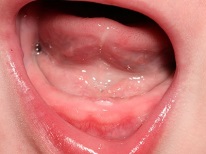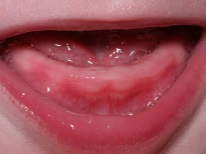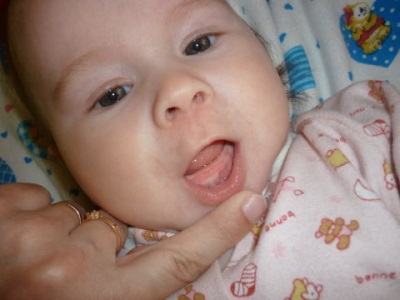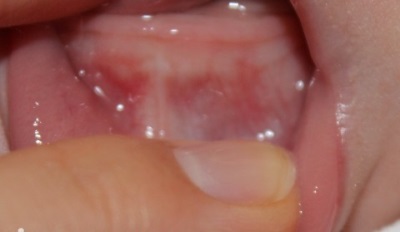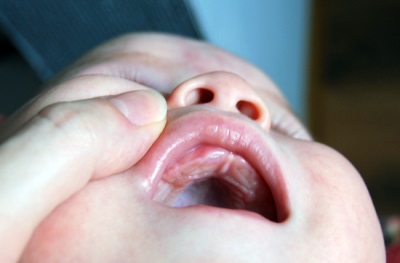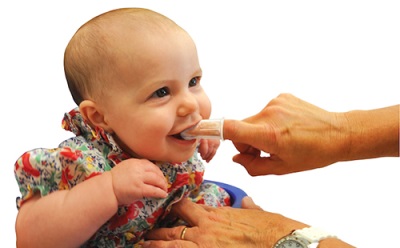Swollen gums in infants
When a newborn is born, its parents will have to learn how to take care of the toddler and closely monitor its health. First, many of them are waiting for sleepless nights and colic, and later comes the time for the emergence of new teeth.
If the baby is naughty, mom should look into the baby’s mouth and look at his gums in anticipation of the first tooth. However, swelling of the gums can be a sign not only of the eruption of the milk teeth, but also of certain diseases.
How does it look
Having opened the baby’s mouth, parents will notice that the baby’s gums have slightly increased in size and become more intense red. In some cases, the color of the gums changes, for example, they turn bluish due to damage to the small vessels during teething. Also, on the swollen gums, other changes may be detected, for example, rounded patches with bloom or small bubbles.
The reasons
The main and most common cause of swelling of the gums in infants in the first year of life is the appearance of teeth. Unfortunately, the period of teething of milk teeth, many children suffer heavily. They suffer from pain, increased saliva and persistent itching. In some babies, teeth come up with fever and other unpleasant symptoms.
Note that the first signs that a tooth will soon erupt into a tooth may appear two or even four weeks before its “pecking”.
Most karapuz pleases parents with their first teeth at 5-6 months of age., but depending on the individual characteristics of one of the babies, the first clove may appear a few months earlier, while someone acquires the first incisors only by their first birthday.
Mom can notice swelling of gums in a baby in such situations:
- The baby has developed caries. This disease can strike even the first little teeth of a karapuz, if parents neglect to thoroughly take care of the baby’s oral cavity, lick a nipple or spoon that is given to the baby, allow the child to drink sweet tea or compote at night. The bacteria that accumulate on the surface of the milk teeth destroy the enamel, and if you don’t show the baby immediately to the dentist and do not treat the teeth, the risk of further spread of the infection increases, which sometimes results in tooth loss.
- Baby got infected with stomatitis. The disease can be provoked by bacteria, viruses, fungi (they most often affect the gums of children under the age of one year) and other causes. In addition to swelling of the gums, stomatitis in the infant is manifested by the appearance of a plaque, rash or spots on the mucous membrane of the mouth. The crumbs can greatly deteriorate the general condition and often the temperature rises.

- The baby has damaged the gums with something sharp or hard. As a result of such an injury, the gum mucosa can become inflamed, which will manifest as an increase in size, increased bleeding and soreness.
- The baby lacks vitamin C or other nutrients. This situation can also lead to problems with the gums, make them looser, enlarged and prone to bleeding.

What to do
The actions of parents who have discovered gum swelling in a baby will depend on the cause of such changes in the oral cavity. If the crumb behaves restlessly, suffers from pain, fever and other adverse symptoms, the child should be shown to a pediatric dentist. The doctor will examine the mouth of the baby and determine whether swelling is associated with the cutting teeth or is a disease that needs to be treated.
When teething
To relieve soreness and itching in the tops of the toddler, parents should purchase special toys for the baby, called teethers. Also you can massage the gums with a clean finger, and if the baby is in great pain, special preparations with cooling and anesthetic effects, which is produced in the form of a gel.
With caries
If the dentist has detected this disease in an infant, it is important to immediately treat it in order to prevent further destruction of dental tissues. The method of treatment will depend on the stage and severity of the infection. Many children have teeth that are silver or are treated with fluoride, and sometimes they have to resort to the removal of infected tissues and filling.
With stomatitis
In the treatment of such a disease, they first try to determine its cause, since antiviral medications are prescribed for herpes stomatitis, they are influenced by antimicrobial agents for bacterial stomatitis, and drugs that affect fungi are shown for candidal stomatitis. Also, the baby, who has been diagnosed with stomatitis, needs to process the oral cavity with antiseptic solutions and anti-inflammatory gels.
A lot of interesting things about the appearance of the first teeth in children, you will learn from the transfer of Dr. Komarovsky.


